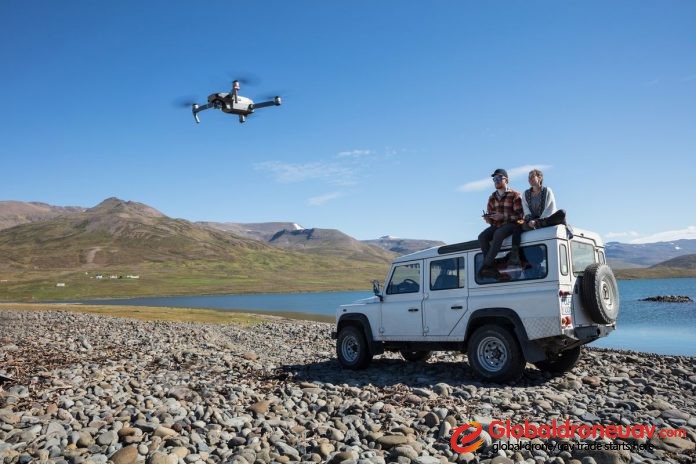DJI’s new drone is absolutely quiet

DJI’s new drone is absolutely quiet
One of the things you come to anticipate after flying a drone for a while is how the people around you will react. If you take off or land near someone who’s unfamiliar with the technology, a few people will be curious; many others will get upset. A loud machine making an angry buzzing sound a few feet from your head is something many humans have an instinctively negative reaction to.
A phrase like “angry buzzing” sounds subjective, but it’s not just my opinion. A NASA study found that the sounds of drones were roughly twice as annoying to the average person as the same volume of noise produced by a car or truck. The noise of a drone is more annoying at the same volume because it’s a much higher frequency, one that happens to be particularly unpleasant to the ears of most humans.
DJI, the world’s most popular brand of consumer drones, is trying to do something about that. Its Mavic Pro Platinum, released back in August of this year, comes with a set of redesigned rotor blades that the company claims make the unit 60 percent quieter than the previous model. It tweaked the design of the blades by adding what’s known as a “raked wingtip.” The blades curve through the middle and angle back and up at the tip. To optimize for the new design, DJI also added electronic speed controllers that spin them at a different rate.
When you launch indoors and hover the drone a few feet from you, the sound is more like a loud desk fan. You wouldn’t miss it, but it no longer sounds like an angry, oversized bee. Some YouTube reviewers have pointed out that, in terms of decibels, there is no real change between the old rotors and the new. That’s true, but it misses the point. It’s not a significant difference in volume, but rather in pitch.
once you get the drone in the air, the difference is even more striking. At a height of about 30 feet, you can still hear the whine of the original Mavic Pro loud and clear. At that same distance, the sound of the reengineered Mavic Pro Platinum almost completely fades away. If you’re actively listening for it, it’s still detectable, but the average bystander walking below wouldn’t pick up on the fact that something is close overhead. You can see a little visualization of the difference below. The gray spike around 8,000Hz is what really bothers most human ears with the old Mavic drone. The yellow line is a comparison of the sound produced by the new one.
As someone who flies drones often, this is a welcome improvement. I enjoy flying outdoors, but hate to ruin the experience for other nature lovers who may feel threatened or annoyed by the drone. Cutting back on the sound is a big piece of making the experience pleasant for everyone.
I’m of two minds about what this means for public perception and governmental regulation of drones in the future, however. In the past, drone advocates have dismissed fears about how this technology could be used for spying or surveillance by pointing out, correctly, that it wasn’t very subtle. If you wanted to peep into a fifth-story window and not get caught, you would have a much easier time with a telephoto lens than a consumer drone. The quieter drones get, the harder it is to make the case that they aren’t powerful tools for invading other people’s privacy.
On the other hand, quieter drones will be far easier to integrate into everyday life. The NASA study was commissioned as part of the agency’s larger effort to imagine what the next generation of aviation will look like, and how large numbers of autonomous airborne vehicles can be safely introduced into the skies above cities and towns. Making drones way less annoying is going to be key to the success or failure of initiatives like Amazon Prime Air.
It was announced last week that the Department of Transportation is preparing to review applications from municipalities around the US that want to test advanced drone operations. The aim is to have at least five projects running over the next three years that will test out missions like autonomous delivery over populated areas, flights beyond the operator’s line of sight, and flights at night. This technology is moving from fantasy to reality at a steady pace.
Last but not least, this demo made me wonder, what took so long? The design changes to the rotors aren’t being billed as some innovative breakthrough, just a common sense application of knowledge that has existed in the aerospace world for decades. DJI says they aren’t any more expensive to produce. (In fact you get better battery life with the new system than with older models.) But they do require careful design and testing. DJI can afford to pump some engineering resources into things like this, while most competitors can’t.
Hearing the Mavic Platinum in action is a reminder that DJI is light-years ahead of the pack when it comes to innovation in the consumer drone space. From high-level computer vision techniques down to the little details of how to shape the plastic rotors that actually get your gadget off the ground, no one else comes close at the moment.

